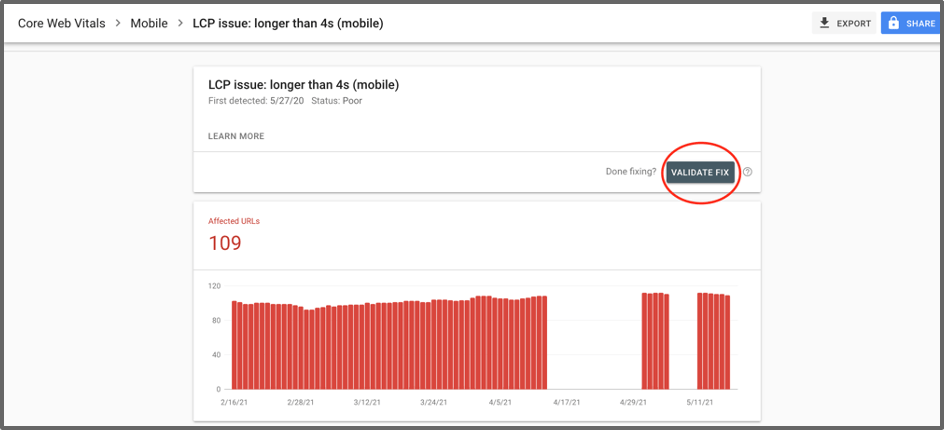Google Search Console is a powerful tool that business owners, marketers, and SEO specialists can use to elevate their site’s digital presence and organic traffic.
But despite its growing popularity, the Google Search Console interface isn’t exactly the most elevated or intuitive to use. Hence the increasing volume of queries for “how to use google search console” over the years.
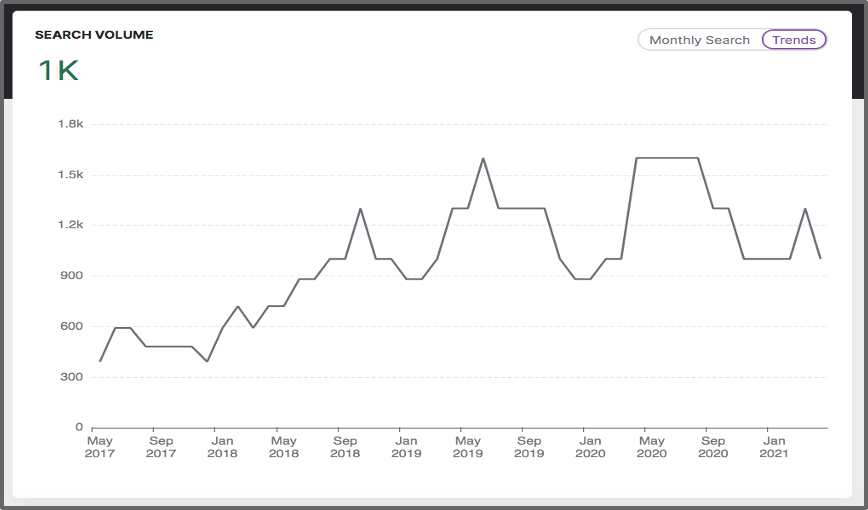
Search volume trends from 2017-2021 for ‘how to use google search console.’”
Knowing how to use Google Search Console the right way is the key to turning all of that valuable data into practical insights for your SEO strategy.
In this post, we’re going to cover four ways to use this free platform to rank higher, drive traffic, and produce top-quality content. You’ll learn how to:
- Confirm that Google understands the relevance of your content.
- Check that Google is properly crawling and indexing your web pages.
- Troubleshoot technical and page performance issues.
- Run SEO A/B tests with the help of GSC’s daily rank tracking.
What is Google Search Console?
Google Search Console is a free platform that helps marketers and SEO specialists track and analyze their SEO performance. Users can also identify and troubleshoot technical and page performance issues in order to make their website more search-engine friendly.
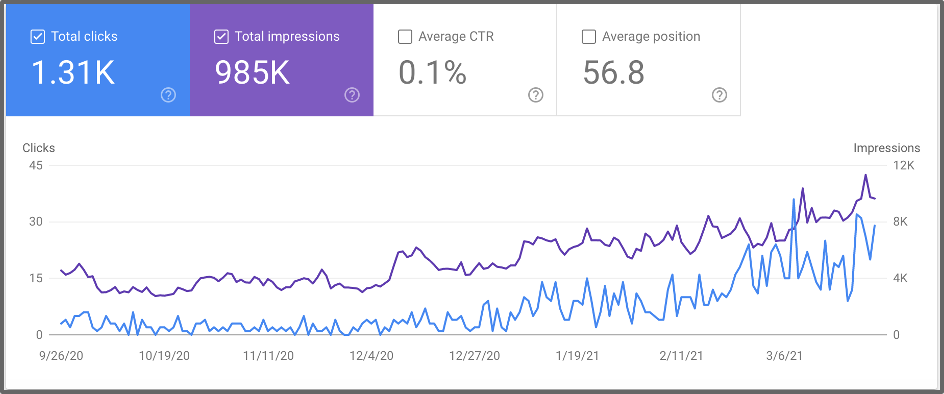
Search performance metrics in Google Search Console
Not only is the platform completely free to use, but it is also the most comprehensive, real-time SEO dataset available anywhere.
How to use Google Search Console (overview)
There are several reasons why regularly using GSC isan essential part of any comprehensive digital marketing strategy. Google has continually iterated on their Search Console platform to improve dashboard features while also providing comprehensive search engine performance data.
So although different features have been added and tweaked over the years, the goal of the platform has remained the same: to give business owners, marketers, and SEO specialists direct guidance on how to elevate their SEO performance—from both a content and technical standpoint.
At a high level, here’s how to use Google Search Console for SEO:
- Track keyword rankings, impressions, organic traffic, average position, and click-through rate (CTR).
- Understand index coverage and confirm that Google crawlers are properly indexing web pages.
- Submit sitemaps, disavow files, and removals.
- Identify and troubleshoot page experience, Core Web Vitals, or mobile usability issues.
- Confirm Google sees schema.org markup so web pages can appear in rich results.
- See security issues or manual actions Google has identified.
- Analyze essential backlink data like total external links, internal links, top linked pages, top linking sites, and anchor text distribution
These actions are all essential to not only understanding your SEO performance but improving it as well. And good SEO is paramount to a wide range of marketing goals and objectives, like increasing traffic and conversions, improving your reputation, understanding your audience, and increasing your online presence.
Are you missing SEO opportunities? Find out fast with the free LOCALiQ website grader!
Google Search Console vs. other keyword tracking platforms
Many digital marketers rely on popular SEO platforms like Ahrefs and SEMrush to gather important information about their keyword rankings. These tools are helpful for understanding your performance in relation to competitors, but because they scrape the SERPs to gather keyword ranking data, the information can be incomplete and backdated.
Those tools only see about 30-40% of your website’s total keyword rankings because they crawl a limited number of SERPs and not on a daily basis. For example, compare the total number of keyword rankings that Ahrefs sees in comparison to LinkGraph’s GSC Insights (which is built over Google’s API) for the same website.
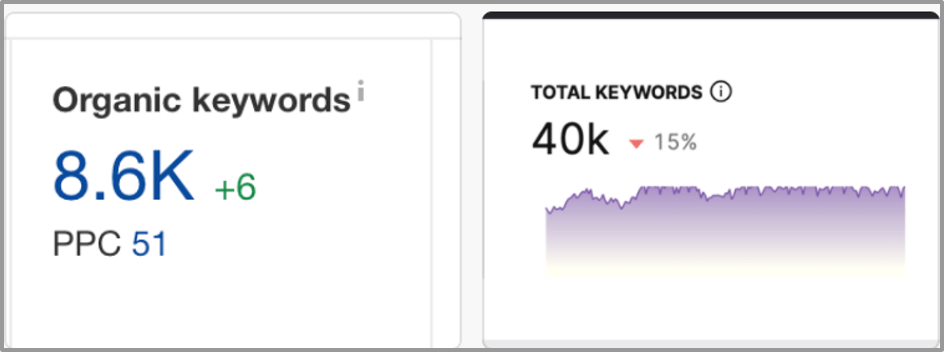
That’s a pretty significant gap in keyword rankings data. When it comes to the search for SEO truth, no other platform can compare to Google’s dataset.
But why is it so important to understand all of the keywords where your web pages rank?
Because every relevant keyword query represents a new opportunity for your business to earn real customers and clients.
How to use Google Search Console to drive more traffic to your site
If you only occasionally log in to your Google Search Console dashboard to see your overall impressions and clicks, you are unlikely to harness its metrics and tools to their full potential.
When it comes to using Google Search Console right, here’s how to maximize the value of the platform and transform that data into strategic optimization decisions.
1. Quickly confirm that Google understands the keywords you’re targeting
When it comes to increasing the total number of keyword phrases that your website ranks for, the best strategy is to regularly publish high-quality content that highlights your brand’s knowledge and expertise in your industry niche.

Instead of waiting 30 days, you can use Google Search Console to quickly confirm that your content is pulling its weight and ranking for your targeted search terms.
Here’s how to use Google Search Console in this manner for each piece of content you publish:
- Choose a relevant keyword target or cluster that you want the web page to rank for.
- Optimize your content for that relevant target keyword.
- Publish your content on your website.
- After a few days, confirm whether Google understands the relevance of your content and is showing it in the SERPs for relevant keyword phrases.
For example, we recently published a blog article that compared the accuracy and features of various keyword tracking software. The blog was optimized for the keyword phrase, “accurate SEO rank tracking.”
A few days after publication, we went to Google Search Console to confirm that Google was understanding the relevance of our content. We found that the blog earned over a thousand impressions for our target keyword phrase, “accurate SEO rank tracking” as well as hundreds of additional impressions for nearly 256 short and long-tail keyword phrases with similar search intent.
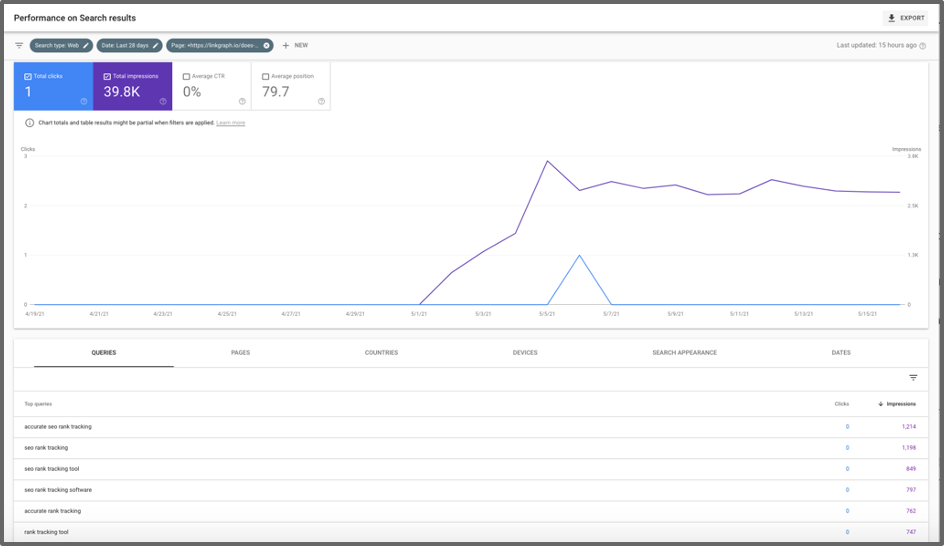
Because Google Search Console updates keyword rankings on a daily basis, we were able to confirm within a few days if we optimized this content effectively.
Once we knew that the content is indeed ranking for appropriate keywords, we could then focus on other SEO factors to elevate its position across those many search queries.
If you find that your content is not ranking high for the target keywords you originally aimed for (or it’s not ranking at all), it’s likely that Google doesn’t perceive the content as relevant to the targeted keyword or as high-quality. Here’s what you can try:
- Check your metadata: Make sure your page title, meta description, and other meta tags are SEO-friendly and include your target keywords.
- Revise the content: Focus on your headings and subheadings for keyword inclusion and enhance the content with more topical depth and semantic-richness
- Use a content tool: A content tool can guide your writing process by suggesting powerful terms to include in your content. Here are a few tools you can try for free from LinkGraph, CognitiveSEO, or LSIGraph
- Build your site authority: Your site might not have enough authority to rank in the SERPs. You may need to take some time to build your site authority with backlinking.
If you want the time and effort you’ve spent on creating a quality piece of content to be worth it, it needs to pull its weight. That means ranking in relevant search queries and earning impressions and organic traffic for your website. Google Search Console is the quickest, and fastest way to confirm that your pages are indeed doing their part.
2. Check that Google is properly crawling and indexing your web pages
Before your web pages can rank for relevant search queries, they have to be properly crawled and indexed by search engine spiders.
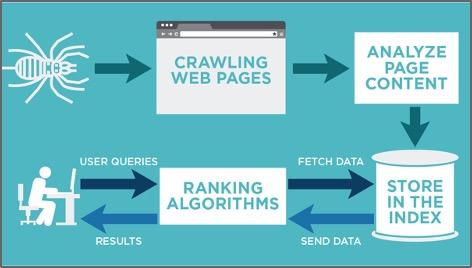
Google Search Console is the best way to see which of your pages have been indexed, when they were last crawled, and if Google identified any enhancements—like breadcrumbs or sitelinks that will influence how your SERP result appears.
Why is this information so valuable to marketers and SEOs who want to elevate their overall SEO performance? A few reasons:
- When you make on-page optimizations to a web page, Google’s algorithm will not weigh those improvements until the page’s next crawl. Don’t try to confirm the effectiveness of your optimizations until they have actually been seen by Google!
- For websites with hundreds to thousands of landing pages, you could potentially max out your crawl budget. Make sure Google only crawls your most important pages by adding robots tags with “noindex, nofollow” directives to any low-value pages!
- Enhancements help your web pages more clickable in the SERPs. If you add schema.org markup to your site to appear in certain rich results, confirm that your code is correct and they are indeed showing up in the SERPs!
If you want to have more agency over which pages of your website Google promotes to searchers, you can also use Google Search Console to submit a sitemap. A sitemap will communicate to Google which pages on your website are most important and should therefore be crawled and promoted more often.

3. Troubleshoot technical and page performance issues
Relevant, high-quality content is not the only requirement for ranking in Google. The technical performance of your website strongly influences Google’s level of trust in—and your visitors’ perception of—your business.
Google’s crawlers want to see that your pages are responsive, fast-loading, and provide a quality page experience for users who discover them through search.
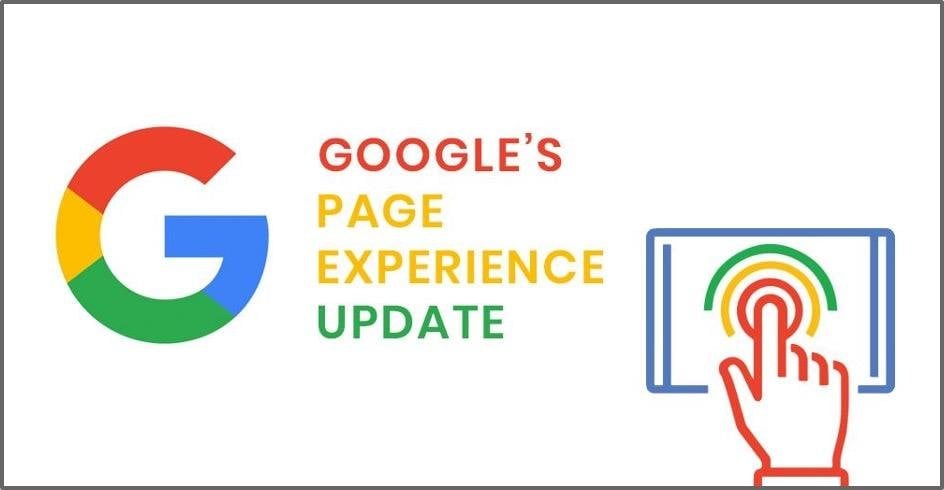
Troubleshooting technical problems on your website can be a bit intimidating, particularly if you don’t have the most extensive knowledge of working on the backend of your website. But Google Search Console simplifies that process so site owners can identify and address any technical or page performance issues that could impact their keyword rankings and positions.
Google’s ranking algorithm weighs the following signals to understand the quality of web page’s overall experience:
- Core Web Vitals: This includes the site speed, load times, interactivity, and visual stability of your web pages.
- Mobile Usability: Due to mobile-first indexing, Google likes web pages that are responsive, fast-loading, and high-performing on mobile devices.
- Security: Web pages should provide safe browsing and be secure for users.
- HTTPS: HTTPS is more secure than HTTP. Too many urls with HTTP protocols could result in worse SEO performance because of the lack of encryption
If your web pages suffer in any of the above areas, Google will tell you in the Experience feature of your Google Search Console account. They will let you know what problems they’ve detected and on which web pages.
For example, this website has over 109 landing pages that Google sees as providing a low-quality page experience. Unless this website resolves those technical problems, they are unlikely to see their overall SEO performance—and therefore their organic traffic—improve.
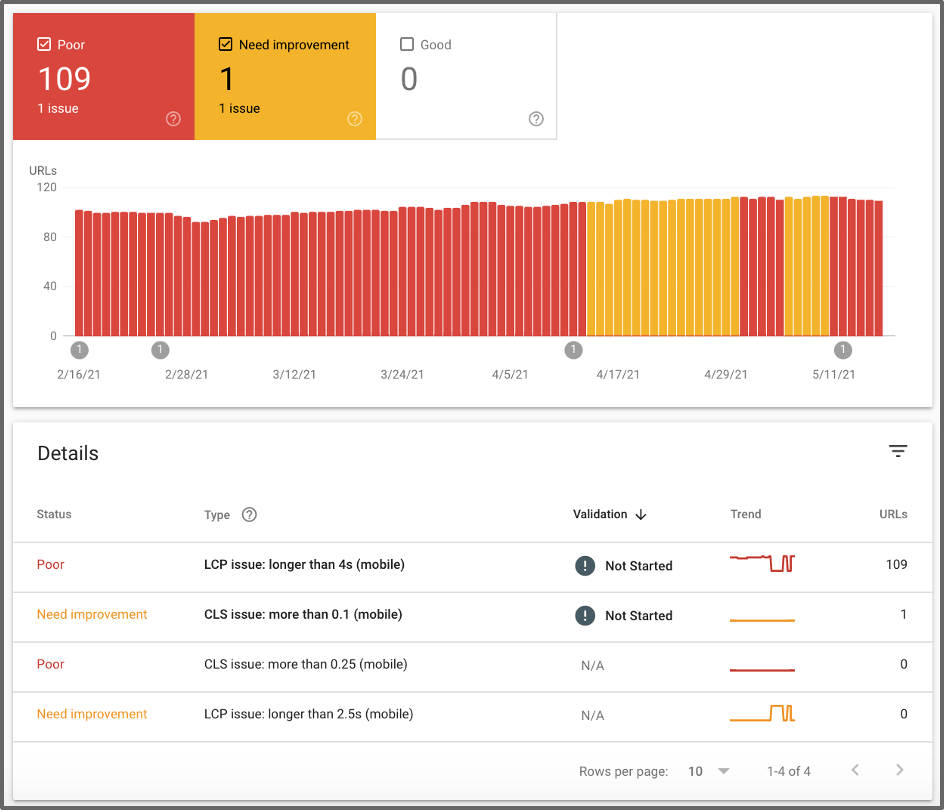
If you are seeing similar page experience metrics in your own Google Search Console account, here are the next steps you should take:
- Identify the specific web page that has been flagged and the specified error type.
- Send this information to your web developer or whoever will attempt to resolve the issue on the backend of your website.
- Once the problem has been fixed, confirm the problem is resolved by using the “Validate Fix” feature in your Google Search Console Account.

- You should get confirmation of your validation submission. It will take Google about 28 days to confirm whether the issue has been resolved.
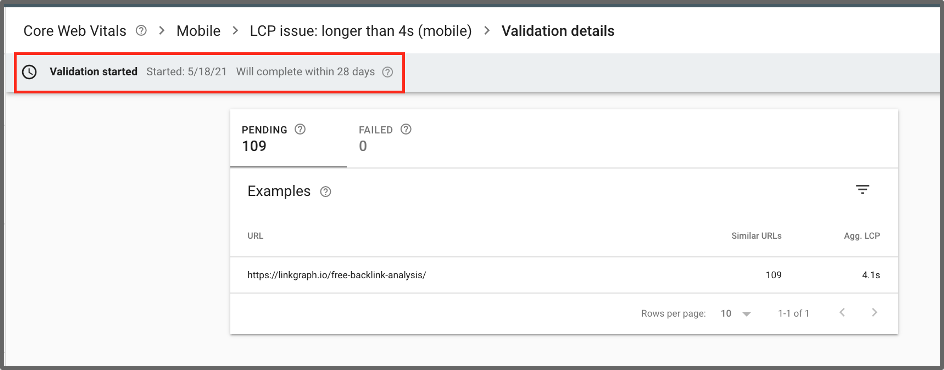
It’s important to identify and resolve technical and page performance issues as quickly as possible. Although there are other tools available to troubleshoot page experience issues, Google Search Console gives you the most direct guidance on where to focus your efforts.
Make sure you perform SEO audits regularly to ensure everything looks good beneath the hood of your website.
4. Run SEO A/B tests with the help of Google Search Console’s daily rank tracking
Once you know your web pages are ranking for relevant keywords and that your page performance, security, and mobile usability meet Google’s standards, you can use Google Search Console to A/B test specific optimizations to try and improve your average positions across all of your keywords.
With daily keyword tracking in Google Search Console, you can confirm fairly quickly whether those optimizations were successful.
To run a split test in Google Search Console, follow these steps:
- Choose what page you want to test and the specific variant you would like to test. Don’t test more than one variant, or it will be difficult to determine which resulted in improved rankings, impressions, or organic traffic
- Make your optimization to your page (whether that be a page title, internal links, web design, meta description, etc.)
- Wait 7-10 days
- Log in to Google Search Console to see whether the page improved in impressions, average position, clicks, or click-through-rate
For example, my content team attempted to improve the total keyword rankings for a piece of long-form content on our website by increasing the word count and topical depth of the content. Our writers improved the word count of the page from about 1500 to over 4000.
The content was updated on the website on December 29th, 2020. Here are the Google Search Console metrics for the landing page from the past six months.

It’s clear that Google responded to our content changes. Within seven days, our impressions improved by 420% and our average position improved by over 20 positions. As a result, we changed the same variant (content length) on other pages of our website and saw similar results.
Although Google Search Console makes it easy to quickly analyze the results of your split tests, there isn’t any way to track the changes you make to your website within the platform. To track your optimizations and Google metrics in the same tool, try a keyword rank tracking tools that include SEO A/B testing features like GSC Insights or Rank Science.
SEO A/B Test Tracking in Google Search Console Insights
Google Search Console is the best way to narrow in on which optimizations in your SEO testing actually result in improved rankings and impressions. Then, you can redeploy those optimizations on other pages of your website.
How to use Google Search Console for better SEO [recap]
As mentioned above, every relevant keyword query represents a new opportunity for your business to earn real customers and clients. And when it comes to iterating on your own website and understanding whether your SEO strategy is on the right track, the accuracy and scope of Google Search Console’s data is unmatched by any other tool.
Although Google keeps a tight lid on their ranking algorithms, they do communicate very clearly through Google Search Console where to focus your efforts to elevate your overall search performance. Analyzing that data and using it as a roadmap is one of the best strategies you can take for improving your online visibility.
If you’re not actively using your Google Search Console account, you’re not getting a complete picture of where your website currently stands.
So here’s the recap on how to use Google Search Console the right way to reap its benefits:
- Confirm within a few days that Google associates your content to the keyword you’re targeting, so you can then implement tactics to elevate its position across even more search queries.
- Prioritize the most important pages Google should crawl so your targeted pages can rank more quickly and display rich results.
- Troubleshoot and resolve page experience issues with Google Search Console’s direct guidance.
- Run SEO split tests and quickly learn which optimization was successful, so you can then implement it on additional pages.
About the author
Manick Bhan is the Founder and CTO of LinkGraph, an award-winning SEO and digital marketing agency. Through his agency work, thought leadership, and speaking engagements, he helps brands of all sizes grow their digital presence. You can follow him at @madmanick.

